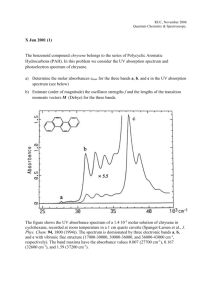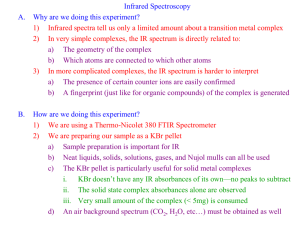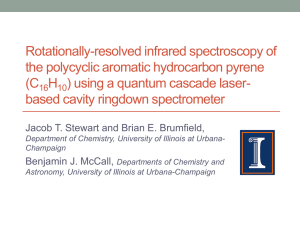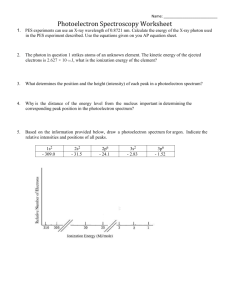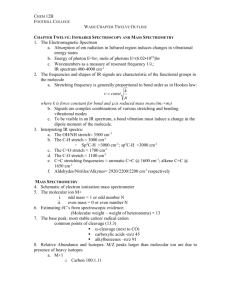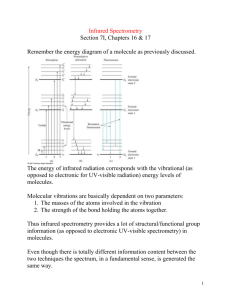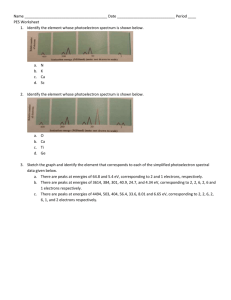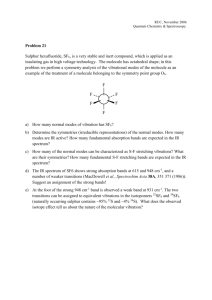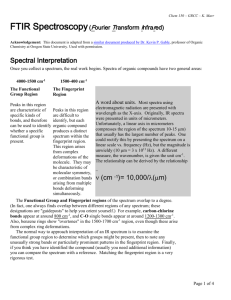Opgave 1
advertisement
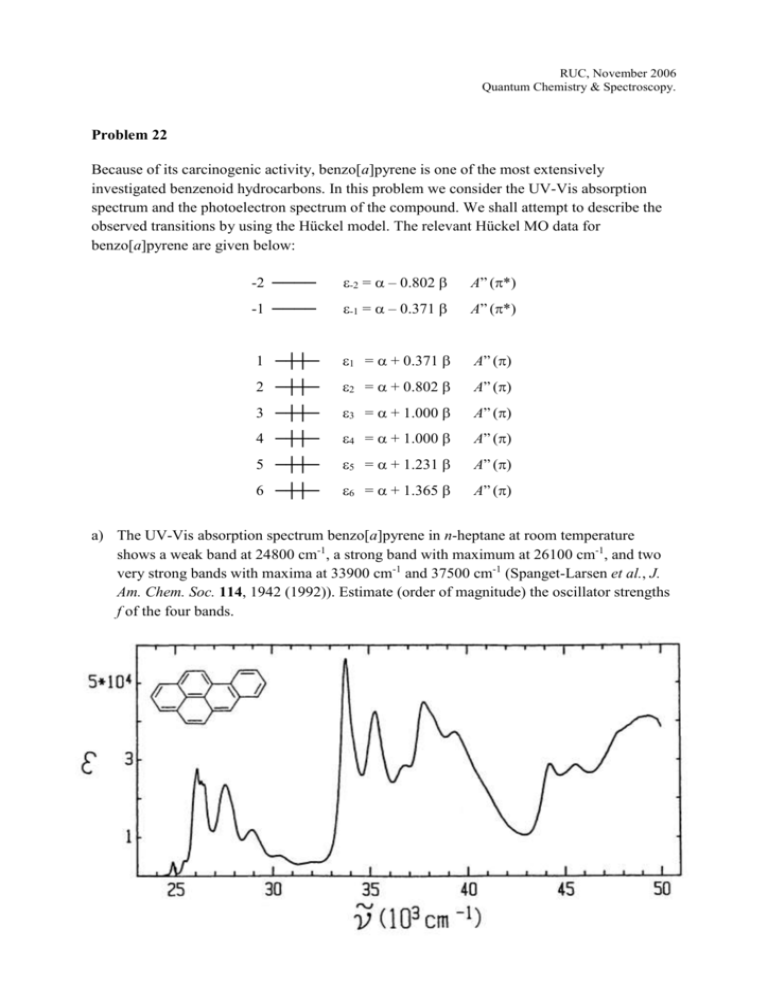
RUC, November 2006 Quantum Chemistry & Spectroscopy. Problem 22 Because of its carcinogenic activity, benzo[a]pyrene is one of the most extensively investigated benzenoid hydrocarbons. In this problem we consider the UV-Vis absorption spectrum and the photoelectron spectrum of the compound. We shall attempt to describe the observed transitions by using the Hückel model. The relevant Hückel MO data for benzo[a]pyrene are given below: -2 = – 0.802 A” (*) -1 ──── -1 = – 0.371 A” (*) 1 ─┼┼─ 1 = + 0.371 A” () 2 ─┼┼─ 2 = + 0.802 A” () 3 ─┼┼─ 3 = + 1.000 A” () 4 ─┼┼─ 4 = + 1.000 A” () 5 ─┼┼─ 5 = + 1.231 A” () 6 ─┼┼─ 6 = + 1.365 A” () -2 ──── a) The UV-Vis absorption spectrum benzo[a]pyrene in n-heptane at room temperature shows a weak band at 24800 cm-1, a strong band with maximum at 26100 cm-1, and two very strong bands with maxima at 33900 cm-1 and 37500 cm-1 (Spanget-Larsen et al., J. Am. Chem. Soc. 114, 1942 (1992)). Estimate (order of magnitude) the oscillator strengths f of the four bands. b) Discuss on the basis of the Hückel data possible assignments of the observed bands to the four characteristic transitions La, Lb, Ba, and Bb in Platt’s nomenclature. Suggest effective values of the parameters and (see, e.g., “Laboratorieøvelser i Optisk Spektroskopi”, N.5 – N.6. c) The photoelectron spectrum of benzo[a]pyrene in the gas phase at 145 ºC has sharp peaks at 7.12, 8.00, 8.73, 8.92, 9.49, and 9.95 eV, corresponding to the ionization energies I1 – I6. (Boschi et al., Discuss. Faraday Soc. 54, 116 (1972)). These peaks can be assigned to ejection of electrons from the 6 highest occupied MOs. Determine on the basis of a correlation of the observed ionization energies Ii with the theoretical MO energies i (Koopmans’ theorem) effective values for the Hückel parameters and corresponding to the photoelectron spectrum.
